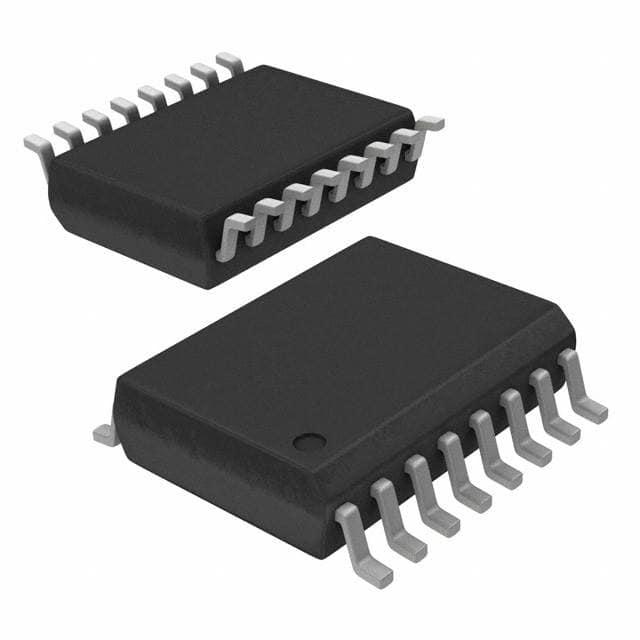How are SystemVerilog structures stored in memory
SystemVerilog structures are composite data types that enable developers to group variables of different data types under a single name, streamlining code readability and data handling in hardware design and verification. This article explores the definition, types, and memory storage concepts of SystemVerilog structures, emphasizing their practical applications and best practices. By understanding and leveraging these concepts, designers can optimize memory usage, enhance code maintainability, and ensure compatibility with hardware requirements in their SystemVerilog projects.
Definition of Structures
In SystemVerilog, a structure is a user-defined composite data type that groups variables of different data types under a single name. It enables developers to organize related data elements into a cohesive unit, similar to a struct in C/C++, but with enhancements tailored for hardware design and verification. Structures streamline code readability, simplify data handling in modules or testbenches, and facilitate the modeling of complex data formats (e.g., packets, registers, or sensor data). Defined using the struct keyword, they enable the creation of custom data containers to organize related elements into a logical unit.
Types of Structures

1. Unpacked Structures
- Definition: Unpacked structures are the default type, allowing for flexible grouping of different data types with potential padding for alignment.
- Use Case: Ideal for abstract data modeling where bit-level control is unnecessary.
2. Packed Structures
- Definition: Declared with
struct packed, members are stored as a contiguous bitstream with no padding. - Use Case: Bit-accurate hardware mapping (e.g., registers, protocol headers).
3. Nested Structures
- Definition: Structures containing other structures as members.
- Use Case: Hierarchical data organization (e.g., packet headers with sub-fields).
4. Arrays of Structures
- Definition: Arrays where individual element is a structure instance.
- Use Case: Managing collections of related data (e.g., buffers, register banks).
5. Anonymous Structures
- Definition: Structures declared without a name or
typedef. - Use Case: One-off data grouping within limited scope.
Key Differences
| Type | Padded? | Bit-Accurate? | Typical Use |
|---|---|---|---|
|
Unpacked |
Yes |
No |
High-level data modeling |
|
Packed |
No |
Yes |
RTL registers, bitstreams |
|
Nested |
Depends |
Depends |
Hierarchical data |
|
Arrays of Structs |
Depends |
Depends |
Data collections |
Why It Matters:
- Packed ensures predictable memory layout for synthesis.
- Unpacked prioritizes alignment and flexibility.
- Nested/Aggregate structures simplify complex data hierarchies.
By choosing the right structure type, designers optimize memory usage, ensure compatibility with hardware, and improve code maintainability.
Syntax of SystemVerilog Structures
SystemVerilog structures are defined using the struct keyword, followed by a list of members enclosed in curly braces {}. The syntax varies slightly depending on whether the structure is packed (bit-accurate) or unpacked (aligned with padding).
1. Basic Structure Declaration
struct { data_type member1; data_type member2; // ... } struct_instance;
- The code snippet below shows the general syntax:
struct { logic [7:0] addr; int data; bit valid; } packet;Here,packetis an instance of an anonymous structure with three members.
2. Named Structures with typedef keyword
To reuse a structure, declare it with typedef keyword:
typedef struct { data_type member1; data_type member2; } struct_name;
- The code snippet below shows the general syntax:
typedef struct { logic [3:0] opcode; logic [7:0] operand; } instruction_t;instruction_tbecomes a reusable data type.
3. Packed Structures
Add the packed keyword to create a contiguous bitstream with no padding:
typedef struct packed { data_type member1; data_type member2; } struct_name;
- The code snippet below shows the general syntax:
typedef struct packed { logic [1:0] mode; logic [7:0] value; } config_t; // Total: 10 bitsMembers are tightly packed;config_toccupies exactly 10 bits.
4. Member Access
Use the dot (.) operator to access members:
struct_instance.member =a value;
- The code snippet below shows the general syntax:
instruction_t instr; instr.opcode = 4'b1010;
5. Initialization
Structures can be initialized at declaration:
struct_name instance = '{member1_value, member2_value};
- The code snippet below shows the general syntax:
instruction_t instr = '{4'hA, 8'hFF};
6. Nested Structures
Structures can contain other structures:
typedef struct { logic [7:0] header; struct_inner inner; } struct_outer;
- The code snippet below shows the general syntax:
typedef struct { logic [3:0] id; } meta_t; typedef struct { meta_t meta; logic [31:0] payload; } packet_t;
7. Arrays of Structures
Structures can be used in arrays:
struct_name array_name [size];
- The code snippet below shows the general syntax:
instruction_t instr_buffer [8]; instr_buffer[0].opcode = 4'h1;
Memory Storage Concepts
Understanding how data is stored in memory is foundational to writing efficient, reliable code, especially in hardware design and low-level programming. Memory storage is governed by principles such as alignment, padding, and size calculation, which directly impact performance, compatibility, and resource utilization. In this section, we dissect these concepts with practical examples and actionable insights.
Memory Alignment
Why Alignment Matters
- Hardware Efficiency: Modern CPUs read memory in fixed-size chunks (e.g., 32-bit or 64-bit words). Aligned data fits neatly into these chunks.
- Atomic Operations: Some architectures require alignment for atomic read/write operations.
- Portability: Misaligned data may behave unpredictably across platforms.
Alignment in Practice
Consider a C structure:
struct Example { char a; // 1 byte int b; // 4 bytes short c; // 2 bytes };
Without alignment, b might start at address 1 (after a), forcing the CPU to perform multiple memory reads. To avoid this, compilers insert padding:
Aligned Layout:
Address 0: [a][padding][padding][padding] Address 4: [b][b][b][b] Address 8: [c][c][padding][padding]
Total size: 12 bytes (instead of 7 bytes).
Padding
What Is Padding?
Padding is the insertion of unused bytes between structure members to ensure alignment. It is a compiler-driven process that optimizes memory access at the cost of increased memory usage.
How Padding Works
Using the earlier Example struct:
a(1 byte) is followed by 3 bytes of padding to alignbat address 4.c(2 bytes) is followed by 2 bytes of padding to align the entire structure to 4-byte boundaries.
Factors Influencing Padding
- Member Order: Rearranging members can minimize padding.
-
- Optimized
Examplestruct:struct Example { int b; // 4 bytes short c; // 2 bytes char a; // 1 byte }; // Total size: 8 bytes (33% smaller!).
- Optimized
- Compiler Rules: Compilers like GCC and Clang follow platform-specific alignment rules.
- Manual Control: Use
#pragma packin C/C++ to override default padding (risky for portability).
Padding in SystemVerilog Structures
In SystemVerilog, unpacked structures may include padding, while packed structures (struct packed) eliminate it:
typedef struct { logic [7:0] a; // 1 byte int b; // 4 bytes } unpacked_t; // Likely size: 8 bytes (with padding). typedef struct packed { logic [7:0] a; logic [31:0] b; } packed_t; // Size: 40 bits (5 bytes, no padding).
Total Size Calculation
How to Calculate Structure Size
- List Member Sizes: Note the size of each member.
- Apply Alignment Rules:
-
- Each member’s offset must be a multiple of its alignment requirement.
- The total size must be a multiple of the largest member’s alignment.
- Sum Members + Padding:
SystemVerilog Example
For an unpacked structure:
typedef struct { logic [7:0] a; // 1 byte int b; // 4 bytes short c; // 2 bytes } example_t;
- Alignment rules (assuming 4-byte alignment for
intandshort):[a][pad][pad][pad][b][b][b][b][c][c][pad][pad] - Total Size: 12 bytes.
In SystemVerilog, leverage packed structures for hardware-centric designs and unpacked structures for abstract modeling. Always validate your assumptions with tools like $bits or sizeof.
Mastering Data Collections in SystemVerilog
SystemVerilog, the industry-standard language for hardware design and verification, offers versatile data structures to manage complex information. Among these, arrays stand out as indispensable tools for organizing indexed elements efficiently. This article explores SystemVerilog’s array types, their unique features, and practical applications in FPGA, ASIC, and verification workflows.
1. Static Arrays: Fixed-Size Indexed Sequences
Static arrays define a collection of elements with a predetermined size. They are ideal for modeling hardware registers, buffers, or lookup tables where the dimensions remain constant.
Syntax:
// 1D static array logic [7:0] mem [0:255]; // 256 elements, each 8 bits // 2D static array int matrix [4][4]; // 4x4 integer grid
Use Cases:
- Storing fixed-size datasets (e.g., ROM tables).
- Representing memory blocks in RTL designs.
- Modeling multi-dimensional hardware structures (e.g., systolic arrays).
2. Dynamic Arrays: Flexible Element Groups
Dynamic arrays enable resizable collections, allowing runtime adjustments to their size. They are invaluable for verification environments where data volumes vary.
Syntax:
int dyn_arr[]; // Declare dyn_arr = new[100]; // Allocate 100 elements dyn_arr.delete(); // Deallocate
SystemVerilog dynamic arrays are a unique type of array that can be adjusted in size during the execution of a simulation. This sets them apart from static arrays, which receive memory allocation at compile time and maintain a constant size throughout the simulation. This is beneficial because there may be situations in which we are uncertain about the exact number of array elements needed when we compile our code snippet.
The code snippet below shows how we declare a dynamic array in SystemVerilog.
// General syntax to declare a dynamic array [];
When we generate a dynamic array, it is essential to declare it as an unpacked type array. Since dynamic arrays start off empty, we need to use the new keyword to allocate memory for them before they can be utilized. We also specify the count of array elements in the array when utilizing the new struct keyword. The example code below illustrates how to declare a dynamic array and subsequently allocate memory for 4 elements.
// Declare a dynamic array logic [7:0] example []; // Allocate memory to the array example = new[4];
Dynamic arrays require a bit more effort to handle than static arrays because we need to control the array's size in our code. Consequently, several techniques are incorporated in SystemVerilog to assist us in handling dynamic arrays. In the prior section, we have already observed one of the most crucial of these techniques – the new technique.
3. Associative Arrays: Key-Value Storage
Associative arrays use arbitrary keys (integers, strings, or enums) to index elements, making them ideal for sparse datasets.
Syntax:
// Integer key example int assoc_arr [int]; assoc_arr[42] = 100; // String key example string phonebook [string]; phonebook["Alice"] = "123-456-7890";
When we initialize an associative array, memory for it isn't allocated at compile time, and we have the ability to resize the array during simulation. Consequently, associative arrays closely resemble the dynamic arrays mentioned earlier in this post. Nonetheless, the method we use to index associative arrays differs from the method we employ for indexing dynamic arrays. As noted earlier, we utilize consecutive integers to reference various components of a dynamic array. Conversely, in SystemVerilog, we can utilize any value we choose to index the various elements of an associative array. For instance, we might utilize non-sequential integers if we aimed to represent the data in a sparsely filled memory. Nonetheless, we might also employ a string to assign a tangible name to the indexes in an associative array. From this, we observe that associative arrays can be viewed as being approximately the same as key-value pairs in different programming languages.
The SystemVerilog below shows the general syntax we use to declare an associative array.
// General syntax to declare an associative array [];
When we utilize associative arrays in our SystemVerilog code, the simulator must locate the memory address of each element in the array whenever we read from or write to it. Consequently, associative arrays are not as efficient as either static or dynamic arrays. This typically leads to gradual execution durations for our test benches. Consequently, we typically choose to utilize either a static or dynamic array rather than associative arrays whenever feasible.
4. Queues: FIFO/LIFO Element Containers
Queues combine array-like indexing with dynamic resizing, supporting FIFO (First-In-First-Out) or LIFO (Last-In-First-Out) operations.
Syntax:
int q [$]; // Declare q.push_back(10); // Insert at end int x = q.pop_front(); // Remove from front
SystemVerilog queues are types of arrays which are automatically resized when we add or remove elements to the array.
The code snippet below shows how we would declare a queue type in SystemVerilog.
// General syntax to declare a queue in SystemVerilog [$:];
In this construct, we use the $symbol inside of square brackets to indicate that we are creating a queue type. When we declare a queue we can initialize it using a comma separated list of values between a pair of curly braces. This is similar to the use of array literals. The SystemVerilog code below shows how we declare both a bounded and an unbounded queue. We also initialize both of the example queues with 2 elements.
// Declaration and initialization of a bounded queue int example_b [$:255] = { 0, 1 }; // Declaration and initialization of an unbounded queue int example_ub [$] = { 2, 3 };
5. Multi-Dimensional Arrays and Packed Arrays
SystemVerilog supports multi-dimensional packed arrays (contiguous bit storage) for hardware-centric designs.
Example:
// Packed 2D array typedef logic [3:0][7:0] packed_matrix_t; // 4x8-bit matrix (32 bits total) // Unpacked 3D array int cube [2][3][4]; // 2x3x4 integer cube
Master these indexed collections to elevate your SystemVerilog coding efficiency and tackle complex hardware challenges with confidence.
How Structures are Stored in Memory
In SystemVerilog, structures are composite data types that allow developers to group variables of different data types under a single name. How these structures are stored in memory location depends on whether they are declared as packed or unpacked. Understanding these storage mechanisms is critical for optimizing memory usage, ensuring alignment, and avoiding unintended behavior in hardware designs.
Storage of Packed Structures
Memory Layout
Packed structures are stored sequentially, with members placed back-to-back:
[opcode (4 bits)][operand (8 bits)]
No padding is inserted, even if members have different data types or sizes.
Key Features
- Bit-Accurate Control:
-
- Members can be directly accessed or manipulated as bits or vectors.
- Example:
instruction_t instr; instr = 12'b1010_11111111; // Direct bit assignment
- Vector Compatibility:
-
- Packed structures can be cast to or from
logicvectors. - Example:
logic [11:0] raw_bits = instr;
- Packed structures can be cast to or from
- Synthesis-Friendly:
-
- Packed structures map directly to hardware registers or wires, preserving bit order.
Limitations
- No Support for Non-Packed Types: Members must be packed types (e.g.,
logic,bit, packed arrays). - Readability Challenges: Complex packed structures can become difficult to debug.
Storage of Unpacked Structures
Memory Layout
Unpacked structures follow alignment rules similar to software programming:
- Members are aligned to boundaries matching their size.
- Padding is inserted to enforce alignment.
Key Features
- Flexibility:
-
- Members can include non-packed types (e.g., strings, classes, dynamic arrays).
- Alignment Optimization:
-
- Compiler ensures members align with hardware-friendly addresses.
- Ease of Use:
-
- Resembles software
structsyntax, making code intuitive.
- Resembles software
Limitations
- Memory Overhead: Padding increases memory usage.
- Non-Deterministic Size: Size varies across tools due to compiler-specific padding rules.
Comparison: Packed vs. Unpacked Structures
| Aspect | Packed Structures | Unpacked Structures |
|---|---|---|
|
Memory Layout |
Contiguous bits, no padding |
Padding inserted for alignment |
|
Size Predictability |
Exact bit-width (e.g.,
) |
Depends on compiler alignment rules |
|
Member Types |
Only packed types allowed |
Any data type (including unpacked) |
|
Use Cases |
RTL registers, bitstreams |
High-level modeling, testbenches |
|
Performance |
Fast bitwise operations |
Potential slowdowns due to padding |
Understanding Unions in SystemVerilog
SystemVerilog, a cornerstone of modern hardware design and verification, offers a powerful feature known as unions to enhance memory efficiency and data flexibility. Unions allow different data types to share the same memory location, enabling developers to interpret stored data in multiple ways. This article explores the syntax, use cases, and best practices for leveraging unions in SystemVerilog.
What Are Unions?
A union in SystemVerilog is a composite data type that enables multiple variables to occupy the same memory space. Unlike structs, which allocate separate memory for each member, unions overlay members, allowing the same storage to be accessed through different formats. Unions are particularly useful for:
- Hardware Registers: Accessing a register as a whole or by its sub-components (e.g., bytes or bits).
- Protocol Processing: Interpreting network packets or sensor data in multiple formats.
- Memory Optimization: Reducing storage overhead in resource-constrained designs.
Syntax and Types
Unions in SystemVerilog are declared using the union keyword and come in two flavors: packed and unpacked.
1. Packed Unions
- Syntax: Include the
packedkeyword. All members must have the same bit width. - Use Case: Ideal for hardware registers requiring bit-accurate access.
- Example:
typedef union packed { logic [31:0] full; // 32-bit value logic [15:0] half [2]; // Two 16-bit halves logic [7:0] byte [4]; // Four 8-bit bytes } reg32_t;Here,reg32_tallows a 32-bit register to be accessed as a single value, two 16-bit halves, or four bytes.
2. Unpacked Unions
- Syntax: Omit the
packedkeyword. Members can vary in size, but the union’s size matches the largest member. - Use Case: Flexible data modeling in testbenches or abstract designs.
- Example:
typedef union { int int_val; shortreal float_val; logic [7:0] byte_arr [4]; } data_u;This union interprets a 32-bit storage as an integer, floating-point value, or byte array.
Key Features and Use Cases
- Type Punning:Access the same data in different formats. For example, a union can reinterpret a floating-point number as an integer for bitwise operations.
- Memory Efficiency:Overlaying members saves memory compared to using separate variables.
- Hardware Abstraction:Simplify register/memory access in RTL designs. For instance, a status register can be read as a whole or parsed into flags.
Pitfalls and Best Practices
- Overwriting Data:Writing to one member alters others sharing the same memory. Ensure mutual exclusivity in usage.
- Padding in Unpacked Unions:Unpacked unions may include padding to align members. Use
packedunions for deterministic layouts. - Tagged Unions (Advanced):SystemVerilog supports
taggedunions with a type tag for safer access:typedef union tagged { int Int; shortreal Float; } numeric_t;Thetaggedkeyword enforces explicit type checks, reducing errors.
Example
Consider a network packet header where a 16-bit field can represent either a port number or a protocol code:
typedef union packed { logic [15:0] raw; struct packed { logic [7:0] protocol; logic [7:0] code; } proto_code; } header_field_t;
This union allows raw access to the 16-bit field or structured access to its sub-fields.
Unions in SystemVerilog are a double-edged sword: they offer unparalleled flexibility and memory efficiency but require careful handling to avoid subtle bugs. By following best practices—such as using packed unions for hardware registers, avoiding overlapping writes, and leveraging tagged unions in verification—you can harness their power effectively. Whether optimizing RTL designs or creating adaptable testbenches, unions are a valuable tool in the SystemVerilog toolkit.
Practical Examples
Understanding SystemVerilog structures in theory is one thing, but seeing them in action is where their true value becomes apparent. In this section, we explore real-world examples of packed and unpacked structures, demonstrating their use cases, memory layouts, and practical optimizations. These examples will help you write cleaner, more efficient code for FPGA, ASIC, and verification projects.
Example of a Packed Structure
Use Case: Defining a Network Packet Header
Packed structures are ideal for scenarios requiring bit-accurate control, such as protocol headers or hardware registers. Let’s model an Ethernet frame header, which has a fixed, contiguous layout.
Code Implementation
typedef struct packed { logic [47:0] dest_mac; // Destination MAC address (6 bytes) logic [47:0] src_mac; // Source MAC address (6 bytes) logic [15:0] ethertype; // EtherType field (2 bytes) } eth_header_t;
Total Size: 14 bytes (112 bits).
Memory Layout
The packed structure ensures all fields are stored sequentially without padding:
[dest_mac (48)][src_mac (48)][ethertype (16)]
Each field aligns perfectly with its specified bit width.
Key Advantages
- Bitstream Compatibility:
-
- The structure can be directly cast to a
logicvector for transmission:logic [111:0] raw_header = eth_header_t'(header);
- The structure can be directly cast to a
- Hardware Mapping:
-
- Synthesizes to a 112-bit register, matching the physical layer requirements.
- No Padding Overhead:
-
- Eliminates wasted memory, critical for high-speed interfaces.
Case Study: Optimizing a UART Frame
A UART (Universal Asynchronous Receiver-Transmitter) frame typically includes:
- 1 start bit
- 8 data bits
- 1 parity bit
- 2 stop bits
Packed Structure Implementation:
typedef struct packed { logic start; // 1 bit logic [7:0] data; // 8 bits logic parity; // 1 bit logic [1:0] stop; // 2 bits } uart_frame_t; // Total: 12 bits
Result:
- The structure maps directly to a 12-bit shift register.
- Enables simple bitwise operations for serialization/deserialization.
Best Practices for Packed Structures
- Use for Hardware-Centric Data: Registers, protocol headers, or sensor data.
- Validate Bit Widths: Ensure the total bits match specifications (e.g.,
$bits(eth_header_t) == 112). - Avoid Mixing Data Types: Stick to
logic,bit, or packed arrays to prevent synthesis errors.
Example of an Unpacked Structure
Use Case: Modeling Sensor Configuration Data
Unpacked structures excel at grouping heterogeneous data where alignment and readability matter more than bit-level control. Let’s model configuration parameters for a temperature sensor.
Code Implementation
typedef struct { string sensor_name; // Dynamic string (unpacked type) int sampling_rate; // 4 bytes short threshold; // 2 bytes logic [7:0] sensor_id; // 1 byte } sensor_config_t;
Memory Layout:Assuming 4-byte alignment for int and short:
[sensor_name (pointer)][sampling_rate (4)][threshold (2)][sensor_id (1)][padding (1)]
Total Size: Size varies by tool, but likely 12–16 bytes (excluding the string data).
Key Advantages
- Mixed-Type Support:
-
- Combines strings, integers, and logic vectors in one structure.
- Alignment Compliance:
-
- Compiler inserts padding to ensure
sampling_ratestarts at a 4-byte boundary.
- Compiler inserts padding to ensure
- Ease of Debugging:
-
- Members can be inspected individually in simulation.
Case Study: Testbench Transaction Modeling
In verification, unpacked structures model complex transactions with metadata. For example, an AXI4 bus transaction:
typedef struct { bit [3:0] awid; // Write address ID bit [31:0] awaddr; // Write address bit [7:0] awlen; // Burst length bit [2:0] awsize; // Burst size bit [1:0] awburst; // Burst type bit awvalid; // Valid signal } axi_write_addr_t;
Simulation Benefits:
- Transactions can be randomized, logged, and reused across test cases.
- Padding ensures alignment with AXI4 protocol requirements.
Best Practices for Unpacked Structures
- Order Members by Size: Place larger members first to minimize padding.
typedef struct { int sampling_rate; // 4 bytes short threshold; // 2 bytes logic [7:0] sensor_id; // 1 byte string sensor_name; // Dynamic } optimized_config_t; // Likely size: 8 bytes (before string). - Use for Abstract Modeling: Configuration data, testbench transactions, or control blocks.
- Verify with
$bits:$display("Size of config: %0d bytes", $bits(config) / 8);
Comparison: Packed vs. Unpacked in Practice
| Scenario | Packed Structure | Unpacked Structure |
|---|---|---|
|
Network Protocol Header |
✅ Bit-accurate, no padding |
❌ Padding disrupts fixed-size layout |
|
Testbench Transaction |
❌ Can’t include strings/dynamic arrays |
✅ Flexible for mixed-type data |
|
FPGA Register Map |
✅ Direct hardware mapping |
❌ Padding wastes resources |
|
Sensor Configuration |
❌ Limited to packed types |
✅ Supports strings and metadata |
Advanced Techniques
Combining Packed and Unpacked Structures
Use nested structures to mix precision and flexibility:
typedef struct packed { logic [3:0] cmd; logic [7:0] addr; } command_t; typedef struct { command_t cmd_packet; // Packed int timestamp; string debug_msg; } transaction_t;
- Result:
-
cmd_packetis bit-accurate for transmission.timestampanddebug_msgprovide contextual data for debugging.
Debugging Padding Issues
In unpacked structures, use simulator-specific features to inspect padding:
- Synopsys VCS:
$displayhto print memory contents. - Cadence Xcelium: Waveform viewers visualize member alignment.
Implications for Hardware Design
In the realm of hardware design, every decision—from data type selection to memory alignment—ripples through performance, power consumption, and resource utilization. SystemVerilog structures, whether packed or unpacked, directly influence these outcomes. This article explores the performance considerations tied to structure usage in FPGA, ASIC, and SoC designs, offering actionable strategies to optimize speed, area, and reliability.
Performance Considerations
SystemVerilog structures impact hardware performance in four key ways:
- Memory Utilization
- Access Speed
- Power Consumption
- Timing Closure
Let’s dissect each factor with real-world examples and solutions.
1. Memory Utilization
Problem:Unpacked structures introduce padding to meet alignment requirements, inflating memory footprint. For resource-constrained devices (e.g., IoT edge nodes or low-power ASICs), wasted memory can limit functionality or increase costs.
Example:
typedef struct { logic [7:0] addr; // 1 byte int data; // 4 bytes short valid; // 2 bytes } unpacked_t;
- Actual Memory Usage:
[addr][3-byte padding][data][valid][2-byte padding] → 12 bytes. - Inefficiency: 5 bytes (42%) wasted on padding.
Solution:
- Use Packed Structures: Eliminate padding for bitstream-critical data.
typedef struct packed { logic [7:0] addr; logic [31:0] data; logic [15:0] valid; } packed_t; // 56 bits (7 bytes). - Reorder Members: In unpacked structures, place larger members first.
typedef struct { int data; short valid; logic [7:0] addr; } optimized_t; // Likely 8 bytes.
Impact:
- Packed structures reduce BRAM/register usage by 30–50% in FPGA designs.
- Smaller memory footprint enables cost-effective ASIC fabrication.
2. Access Speed
Problem:Misaligned data in unpacked structures forces processors to perform multiple memory reads, slowing down operations. For high-speed interfaces (e.g., DDR5, PCIe Gen6), delays can bottleneck throughput.
Example:A CPU accessing a misaligned int in an unpacked structure:
[byte][byte][int][int][int][int] → Requires 2 reads to fetch the int.
Solution:
- Enforce Alignment: Use unpacked structures with compiler-friendly member ordering.
- Leverage Packed Structures: Ensure contiguous, aligned access for hardware-centric data.
Case Study:An AI accelerator chip processed 8-bit quantized weights using unpacked structures, resulting in 15% slower inference times. Switching to packed structures eliminated alignment penalties, achieving full throughput.
3. Power Consumption
Problem:Frequent memory accesses and redundant data transfers (due to padding) increase dynamic power consumption. For battery-powered devices, this shortens operational life.
Example:A wireless sensor node sampling data from an unpacked structure:
- Unpacked: 12-byte reads per sample.
- Packed: 7-byte reads per sample.Power Savings: 42% reduction in memory access energy.
Solution:
- Minimize Accesses: Use packed structures to shrink data transfers.
- Clock Gating: Freeze unused structure memory regions during idle periods.
Impact:
- Packed structures reduce sram access power by 25–35% in low-power ASICs.
4. Timing Closure
Problem:Large unpacked structures with scattered padding can create critical path delays, complicating timing closure. This forces lower clock frequencies or iterative synthesis runs.
Example:A 64-bit CRC module interfacing with an unpacked structure:
typedef struct { logic [31:0] header; byte payload [8]; } data_t; // Likely padded to 72 bits.
- Critical Path: Routing the fragmented 72-bit bus introduced setup violations.
Solution:
- Flatten Structures: Use packed or manually aligned layouts.
typedef struct packed { logic [31:0] header; logic [63:0] payload; } data_t; // 96 bits (contiguous). - Pipeline Accesses: Break wide structures into stages for timing relaxation.
Impact:
- Contiguous packed structures reduced routing delays by 20% in a 7nm ASIC design.





















